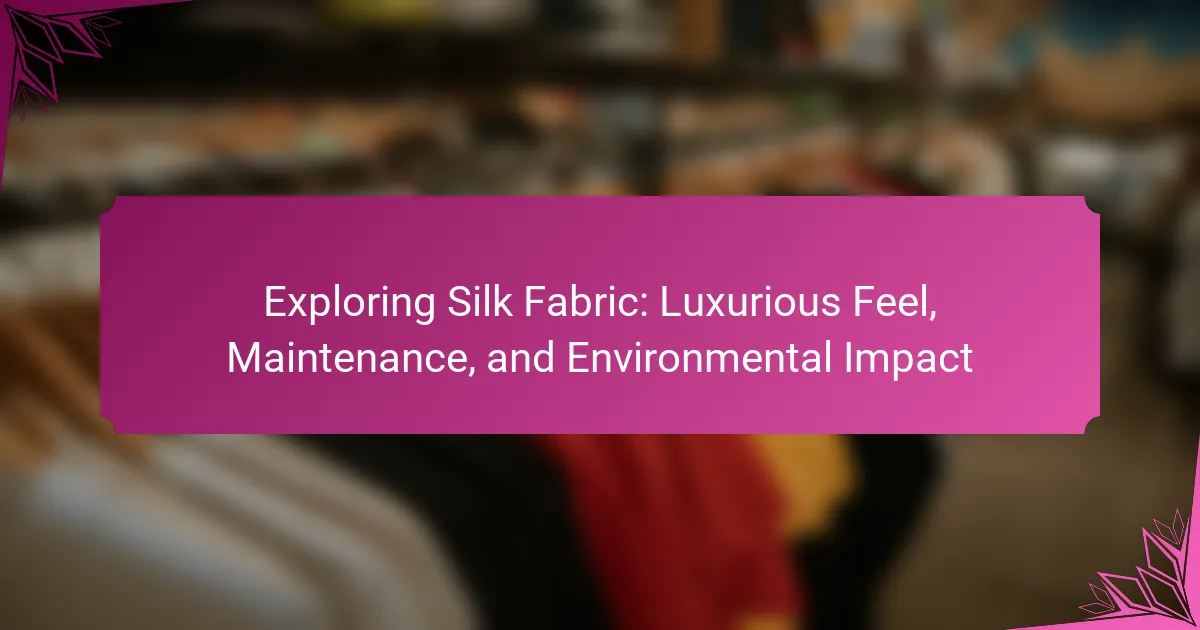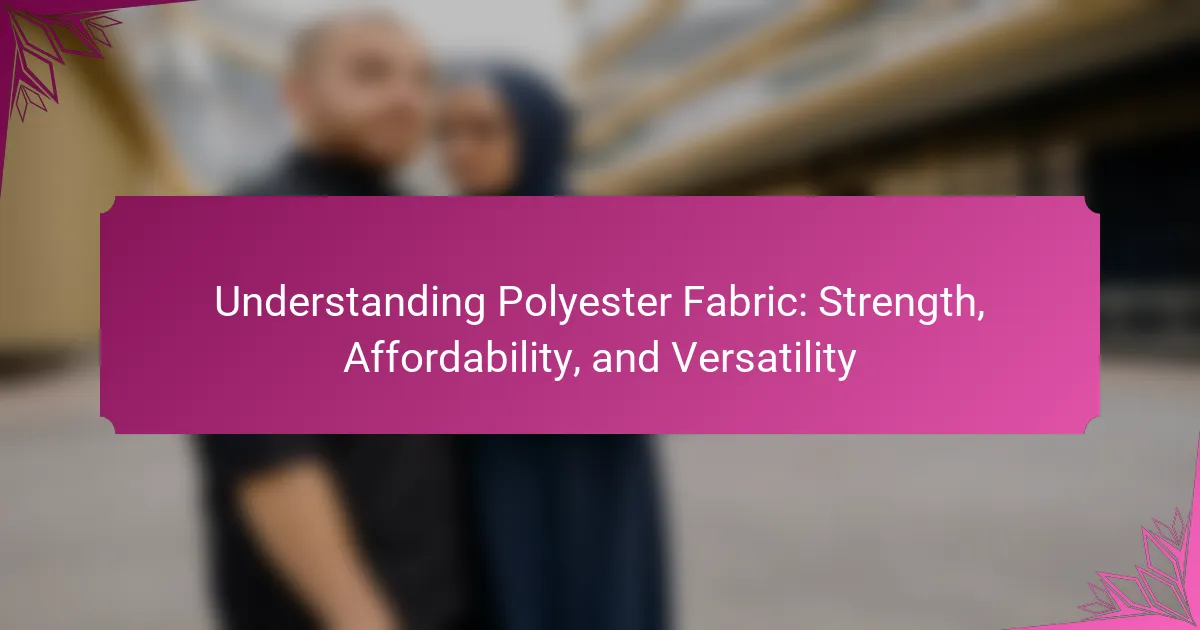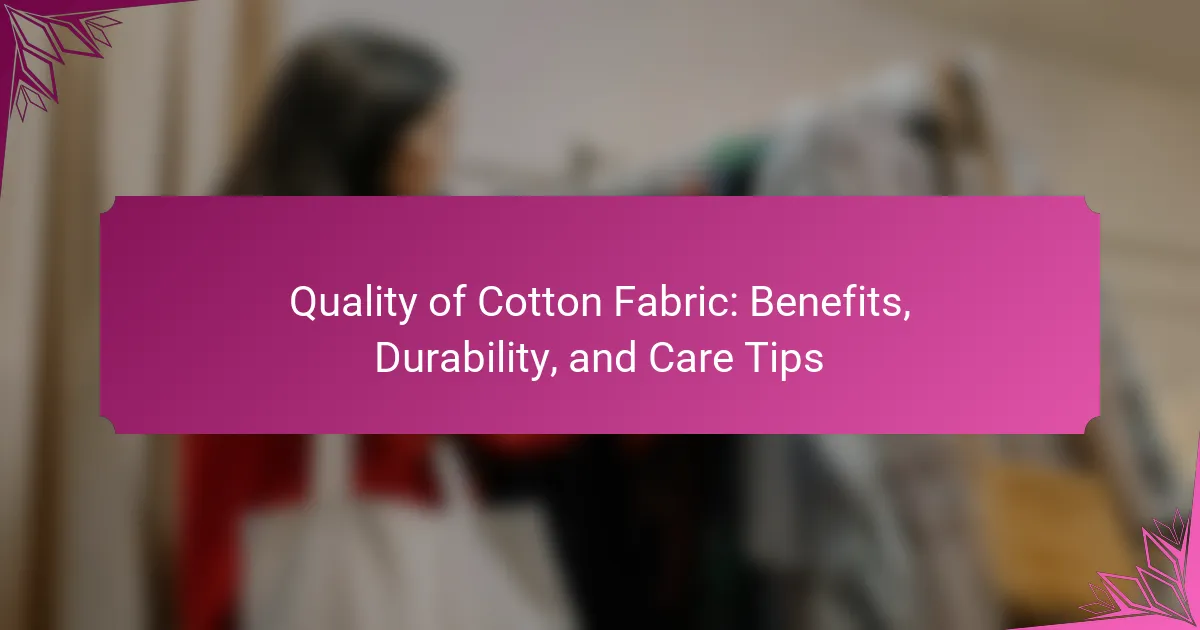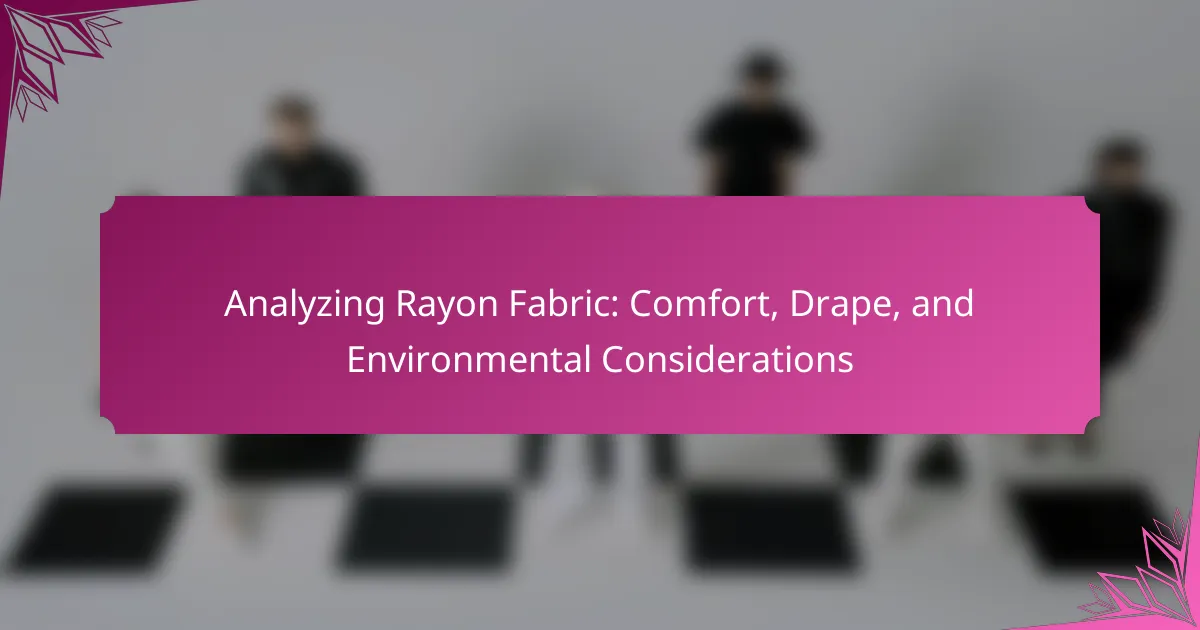Silk fabric is a natural textile derived from the fibers of silkworms, primarily from the Bombyx mori species. Known for its luxurious feel, smooth texture, and natural sheen, silk has been valued since ancient China for its quality and rarity. The production process, called sericulture, involves cultivating silkworms and has significant environmental implications, including high water usage and pesticide impact. Proper maintenance of silk is essential to preserve its quality, requiring gentle washing and careful storage. This article explores the characteristics of silk fabric, its maintenance requirements, and the environmental challenges associated with its production.
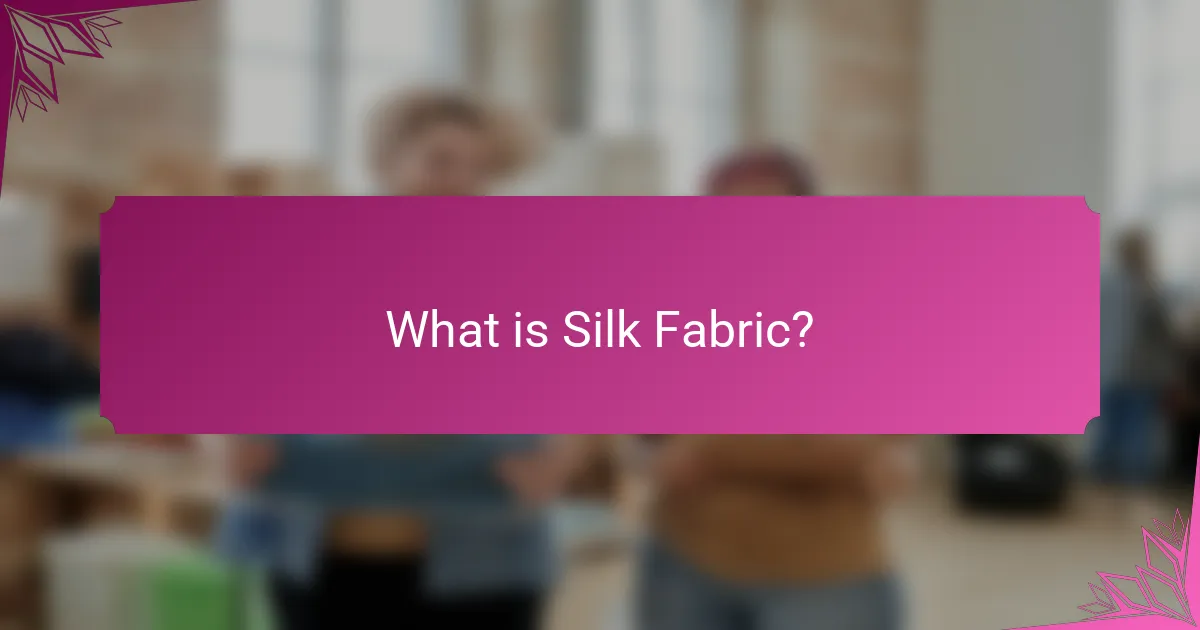
What is Silk Fabric?
Silk fabric is a natural textile made from the fibers produced by silkworms. The primary source of silk is the cocoons spun by the larvae of the silkworm, particularly the species Bombyx mori. This fabric is known for its luxurious feel, smooth texture, and natural sheen. Historically, silk has been valued for its quality and rarity, leading to its association with wealth and nobility. The process of silk production involves sericulture, which is the cultivation of silkworms for their silk. Silk has been used for thousands of years, with origins tracing back to ancient China around 2700 BC. Today, it remains a popular choice for clothing, bedding, and upholstery due to its softness and breathability.
How is silk fabric produced?
Silk fabric is produced through a process that involves the harvesting of silkworm cocoons. The primary source of silk is the Bombyx mori silkworm, which feeds on mulberry leaves. After a period of growth, the silkworm spins a protective cocoon made of silk threads. These cocoons are carefully harvested once the spinning process is complete. The next step involves boiling the cocoons to kill the pupa and to soften the silk fibers. This allows the long threads to be unwound from the cocoon. The silk threads are then washed, dyed, and twisted to create the final fabric. Silk production is labor-intensive and requires precise techniques to maintain the quality of the fibers. Historically, silk has been valued for its texture and luster, making it a luxury material in textiles.
What are the stages of silk production?
The stages of silk production include sericulture, cocoon harvesting, boiling, and weaving. Sericulture involves the cultivation of silkworms, specifically the Bombyx mori species. These silkworms feed on mulberry leaves and spin cocoons. After approximately 25 to 30 days, the cocoons are harvested. The harvesting process occurs when the silkworms are still in their cocoons. Boiling follows harvesting to kill the pupae and soften the silk fibers. This step allows for the unspooling of the silk threads. Finally, the threads are woven into fabric, completing the silk production process. Each stage is crucial for obtaining high-quality silk.
What types of silkworms are used in silk production?
The primary types of silkworms used in silk production are the Bombyx mori and the Antheraea species. Bombyx mori is the most commonly cultivated silkworm, known for producing the majority of silk worldwide. This species thrives in controlled environments and yields high-quality silk fibers. Antheraea species, such as Antheraea mylitta and Antheraea pernyi, are wild silkworms that produce tussah silk. Tussah silk is coarser and has a different texture compared to the silk from Bombyx mori. The silk produced by these silkworms varies in color, texture, and quality, contributing to the diversity of silk fabrics available.
What are the characteristics of silk fabric?
Silk fabric is known for its luxurious feel and smooth texture. It has a natural sheen that gives it an elegant appearance. Silk is lightweight yet strong, making it durable for various applications. The fabric is also breathable, allowing for comfortable wear in different climates. Additionally, silk has excellent moisture-wicking properties, keeping the skin dry. It is hypoallergenic, making it suitable for sensitive skin. Silk fabric drapes beautifully, enhancing the silhouette of garments. Finally, silk can be dyed easily, resulting in vibrant colors.
How does silk fabric feel compared to other fabrics?
Silk fabric feels smooth and luxurious compared to other fabrics. It has a soft texture that glides over the skin. This is due to its fine fibers and natural sheen. In contrast, cotton feels more breathable but less silky. Wool is warmer and coarser, while polyester tends to be less breathable and feels more synthetic. Silk’s unique properties make it highly desirable for clothing and bedding. Studies show that silk can regulate temperature better than many other materials, enhancing comfort.
What are the unique attributes of silk fabric?
Silk fabric has several unique attributes. It is known for its luxurious feel and smooth texture. Silk has a natural sheen that gives it an elegant appearance. The fabric is lightweight yet strong, making it durable. It has excellent moisture-wicking properties, keeping the wearer comfortable. Silk is also hypoallergenic, suitable for sensitive skin. Additionally, it drapes beautifully, enhancing the silhouette of garments. The fiber’s natural temperature-regulating qualities provide warmth in winter and coolness in summer. These attributes contribute to silk’s desirability in high-quality textiles.
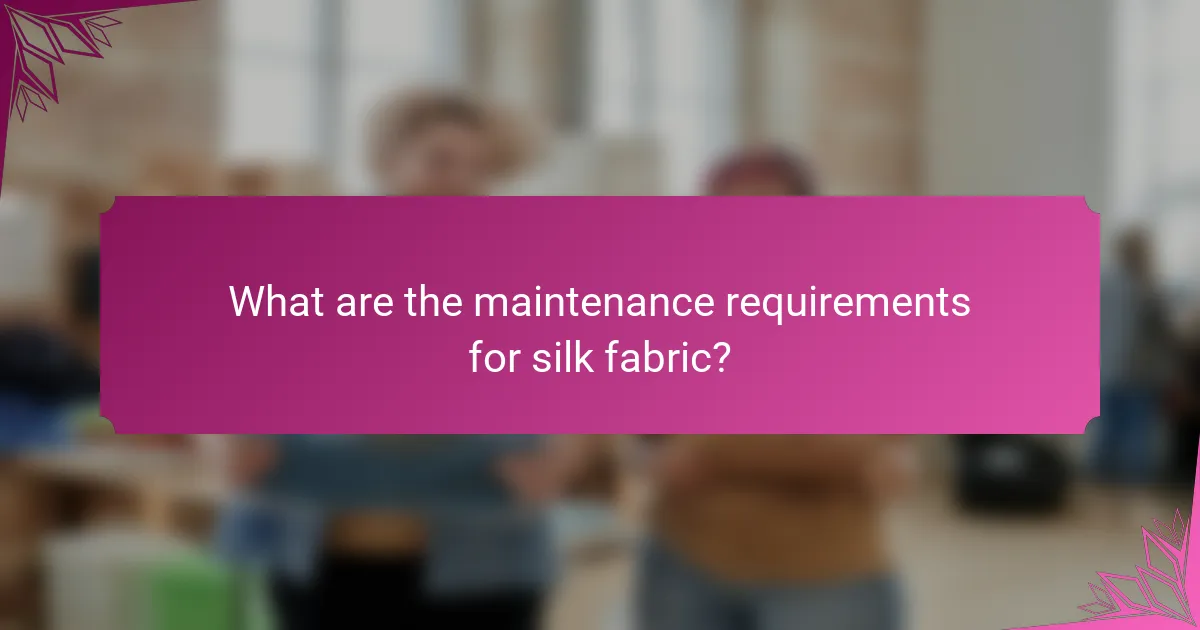
What are the maintenance requirements for silk fabric?
Silk fabric requires gentle care to maintain its quality. Hand washing is recommended with cold water and mild detergent. Avoid wringing or twisting the fabric to prevent damage. Dry silk by laying it flat on a clean towel or hanging it to air dry. Iron silk on a low setting while it is slightly damp to remove wrinkles. Store silk in a cool, dry place away from direct sunlight to prevent fading. Regularly check for any signs of moth damage and take preventive measures. These practices help prolong the life and luster of silk fabric.
How should silk fabric be cleaned?
Silk fabric should be cleaned with care to maintain its quality. Hand washing is the preferred method. Use cool water and a mild detergent specifically designed for silk. Gently agitate the fabric without rubbing or wringing it. Rinse thoroughly with cool water until all detergent is removed. Avoid soaking silk for extended periods. If machine washing is necessary, use the delicate cycle in a mesh bag. Always air dry silk away from direct sunlight. Heat can damage silk fibers, so avoid tumble drying. Following these steps helps preserve the integrity and appearance of silk fabric.
What are the best washing methods for silk?
The best washing methods for silk include hand washing and dry cleaning. Hand washing involves using cold water and a gentle detergent specifically designed for silk. It is important to avoid wringing or twisting the fabric to prevent damage. Instead, gently swish the silk in the water and rinse thoroughly. Dry cleaning is often recommended for delicate silk items, as it minimizes the risk of damage from water. Both methods help maintain the fabric’s luster and integrity. According to experts, these methods prevent shrinking and color fading, ensuring the longevity of silk garments.
How can you remove stains from silk fabric?
To remove stains from silk fabric, act quickly to prevent setting. Blot the stain gently with a clean, dry cloth. Avoid rubbing, as this can damage the fibers. Use cold water to rinse the stained area. If needed, apply a small amount of mild detergent mixed with water. Test this solution on an inconspicuous area first to ensure it does not affect the color. Gently dab the stain with the solution using a soft cloth. Rinse thoroughly with cold water. Allow the silk to air dry away from direct sunlight. These methods are effective as silk is delicate, requiring gentle handling to maintain its integrity.
What are the storage tips for silk fabric?
Store silk fabric in a cool, dry place to prevent damage. Avoid direct sunlight, as it can fade colors and weaken fibers. Use breathable garment bags or cotton sheets for storage. Do not use plastic, as it can trap moisture and cause mildew. Ensure silk is clean before storing to prevent stains from setting. For long-term storage, fold silk items neatly rather than hanging, to avoid stretching. Regularly check stored silk for signs of damage or pests. These tips help maintain the quality and longevity of silk fabric.
How should silk garments be stored to prevent damage?
Silk garments should be stored in a cool, dry place to prevent damage. Avoid exposure to direct sunlight, as it can fade colors and weaken fibers. Use breathable garment bags made of cotton or muslin to protect silk from dust and moisture. Ensure that silk is clean before storing to prevent stains from setting. Fold silk items gently to avoid creases and store them flat if possible. Avoid hanging silk garments, as this can cause stretching. Regularly check stored silk for signs of damage or pests, such as moths. These practices help maintain the integrity and appearance of silk over time.
What is the ideal environment for storing silk fabric?
The ideal environment for storing silk fabric is cool, dry, and dark. Silk should be kept away from direct sunlight to prevent fading. Humidity levels should be low to avoid mold growth. A temperature range of 60 to 70 degrees Fahrenheit is optimal. Acid-free tissue paper can be used to wrap silk items. This prevents creasing and protects the fabric. Storing silk in breathable cotton or linen bags is recommended. These materials allow air circulation while keeping dust away.
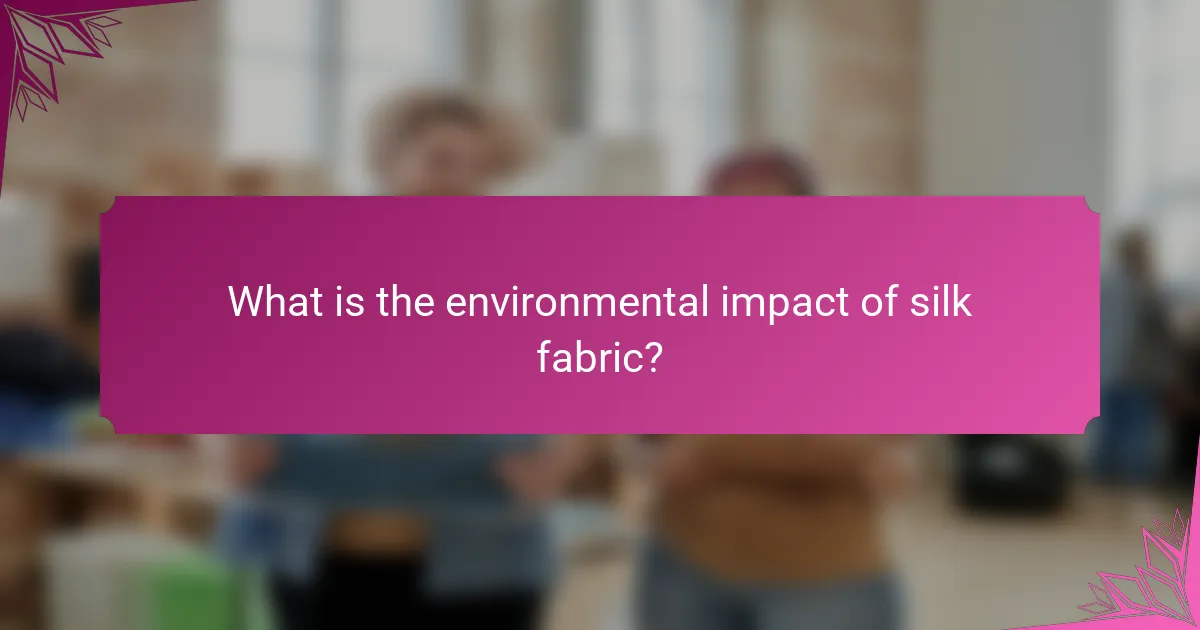
What is the environmental impact of silk fabric?
Silk fabric has a significant environmental impact due to its production process. The cultivation of silkworms requires large amounts of water and land. It is estimated that producing one kilogram of silk can consume up to 15,000 liters of water. Additionally, the use of pesticides in mulberry cultivation can harm local ecosystems. The energy-intensive process of boiling silkworms to extract silk also raises ethical concerns. Furthermore, silk production contributes to greenhouse gas emissions. In contrast, silk is biodegradable, which can mitigate some long-term environmental effects. Overall, while silk has luxurious qualities, its production poses challenges to sustainability.
How does silk production affect the environment?
Silk production negatively affects the environment in several ways. The process requires extensive water usage, leading to depletion of local water resources. Pesticides and fertilizers used in mulberry cultivation can contaminate soil and waterways. Additionally, the energy-intensive methods of silk processing contribute to greenhouse gas emissions. The production also involves deforestation for mulberry plantations, impacting biodiversity. Research indicates that conventional silk farming can result in soil degradation and loss of habitat for various species. Sustainable practices are being developed to mitigate these impacts, but traditional methods remain prevalent.
What are the ecological concerns associated with silk farming?
Silk farming raises several ecological concerns. The cultivation of mulberry trees for silkworms can lead to deforestation. This deforestation disrupts local ecosystems and biodiversity. Additionally, silk production often involves the use of pesticides and fertilizers. These chemicals can contaminate soil and water sources. The energy consumption during silk processing also contributes to carbon emissions. Furthermore, the boiling of silkworms for silk extraction raises ethical concerns regarding animal welfare. These factors collectively highlight the environmental impact of silk farming.
How can sustainable practices be implemented in silk production?
Sustainable practices in silk production can be implemented through organic farming methods. Organic silk farming avoids synthetic pesticides and fertilizers. This reduces environmental pollution and promotes biodiversity. Additionally, using renewable energy sources in production processes minimizes carbon footprints. Implementing water conservation techniques can further enhance sustainability. For instance, rainwater harvesting can reduce reliance on freshwater sources. Lastly, ethical labor practices ensure fair treatment of workers in the silk industry. These practices contribute to a more sustainable silk production system.
What are the benefits of choosing silk over synthetic fabrics?
Silk offers several benefits over synthetic fabrics. Silk is a natural fiber known for its softness and luxurious feel. It is breathable, allowing for better temperature regulation. This property helps keep the body cool in summer and warm in winter. Silk also possesses hypoallergenic qualities, making it suitable for sensitive skin. Additionally, silk is less prone to static cling compared to synthetic materials. Its natural sheen gives garments an elegant appearance. Furthermore, silk is biodegradable, making it an environmentally friendly choice. In contrast, synthetic fabrics often contribute to pollution and are derived from non-renewable resources.
How does silk fabric compare to synthetic alternatives in terms of sustainability?
Silk fabric is generally more sustainable than synthetic alternatives. Silk is a natural fiber produced by silkworms, requiring less energy and fewer chemicals in its production. Unlike synthetic fibers, which are derived from petroleum, silk is biodegradable. The cultivation of silkworms can also promote biodiversity in agricultural practices. In contrast, synthetic fabrics often contribute to microplastic pollution in oceans. Studies indicate that silk production has a lower carbon footprint compared to polyester and nylon. The environmental impact of silk is further reduced when sourced from responsible producers using organic methods.
What health benefits does silk fabric offer to users?
Silk fabric offers several health benefits to users. It is hypoallergenic, reducing the risk of allergic reactions. This quality makes silk suitable for sensitive skin. Silk also regulates temperature, keeping users comfortable in various climates. It can help maintain skin moisture, preventing dryness. Additionally, silk contains natural proteins and amino acids beneficial for hair and skin health. Research indicates that silk may reduce friction on the skin, minimizing irritation. Overall, these properties contribute to better skin and hair health for users.
What are the best practices for caring for silk fabric?
The best practices for caring for silk fabric include gentle washing, proper drying, and careful storage. Hand washing in cold water with a mild detergent is recommended. Avoid using bleach or harsh chemicals, as they can damage silk fibers. Rinse thoroughly to remove any soap residue. To dry, lay the fabric flat on a clean towel to absorb moisture. Avoid wringing or twisting the fabric, as this can cause distortion. Store silk in a cool, dry place away from direct sunlight to prevent fading. Use breathable garment bags to protect against dust and pests. These practices help maintain the quality and longevity of silk fabric.
How can you extend the life of your silk garments?
To extend the life of your silk garments, follow specific care guidelines. Hand wash silk in cold water with a gentle detergent. Avoid wringing or twisting the fabric, as this can cause damage. Air dry silk garments away from direct sunlight to prevent fading. Store silk in a cool, dry place, ideally wrapped in acid-free tissue paper. Keep silk away from moths and pests by using lavender sachets. Iron silk on a low setting while the fabric is slightly damp to avoid scorching. These practices help maintain the integrity and appearance of silk, ensuring longevity.
What common mistakes should be avoided when caring for silk fabric?
Common mistakes to avoid when caring for silk fabric include using hot water for washing. Hot water can damage silk fibers, leading to shrinkage. It’s also important to avoid harsh detergents. These can strip silk of its natural luster. Additionally, never wring or twist silk to remove excess water. This can cause distortion of the fabric’s shape. Instead, gently press the water out. Avoid direct sunlight when drying silk, as UV rays can fade colors. Lastly, do not store silk in plastic bags. This can trap moisture and promote mildew growth. Proper care ensures silk maintains its luxurious feel and appearance.
Silk fabric is a natural textile derived from the fibers of silkworms, primarily the Bombyx mori species, known for its luxurious feel, smooth texture, and natural sheen. The article explores the production process of silk, including sericulture, cocoon harvesting, and weaving, while detailing the unique characteristics of silk fabric such as breathability, hypoallergenic properties, and moisture-wicking abilities. It also addresses maintenance requirements for silk, including washing, drying, and storage best practices, along with the environmental impact of silk production and the benefits of choosing silk over synthetic fabrics. Overall, the content provides a comprehensive overview of silk fabric, from its luxurious qualities to its care and sustainability considerations.
